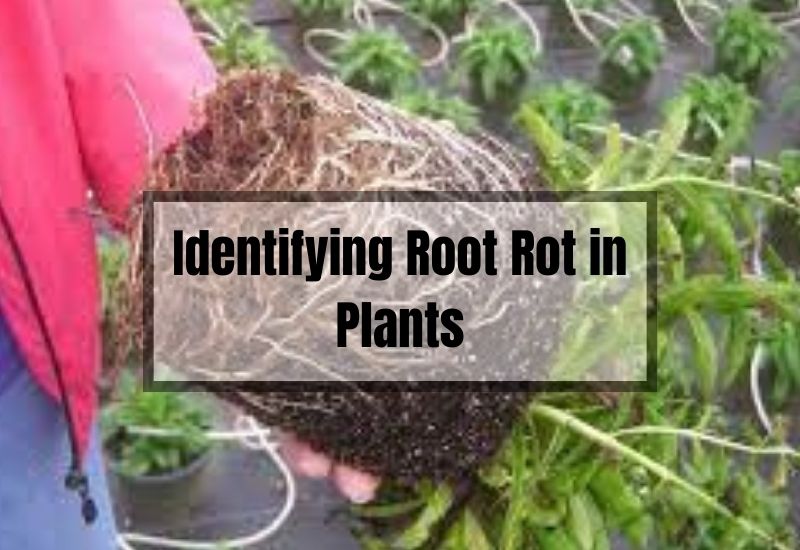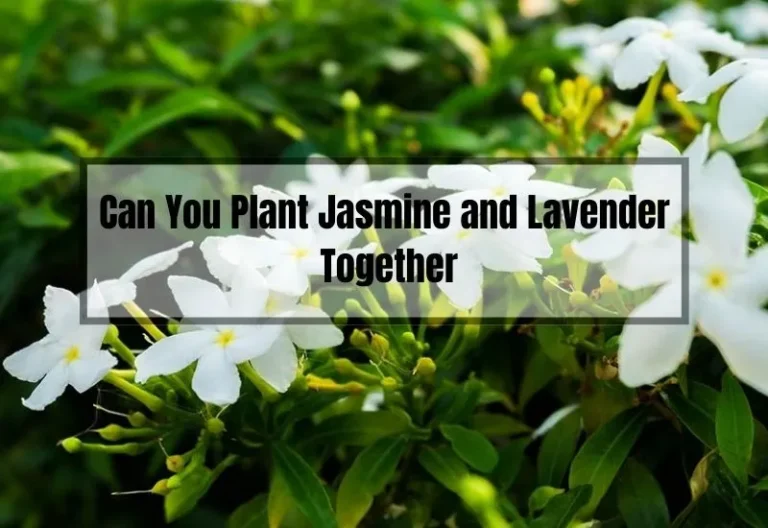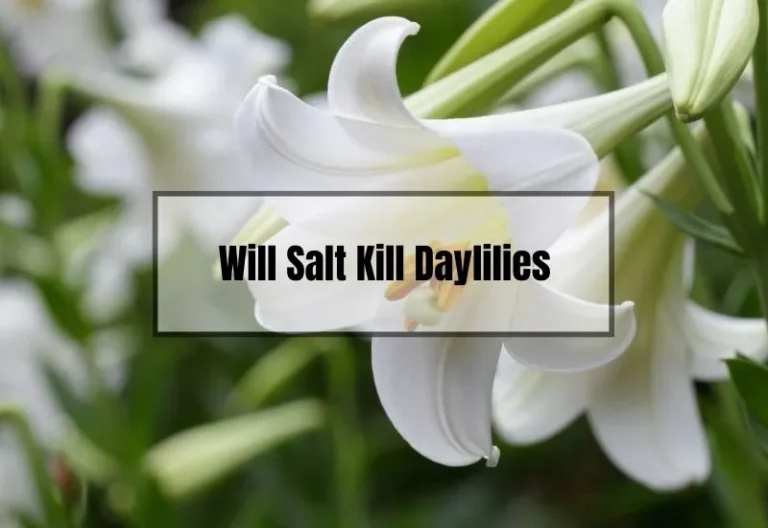Root Rot in Plants: Causes, Symptoms, and Treatment
From Louise: Passionate about gardening, I specialize in plant care and flower knowledge. I’m here to share my expertise and assist with your gardening queries. Feel free to ask any questions or seek advice on lawn care—I’ll respond within 24 hours!
If you’re a proud houseplant owner, you know how rewarding it can be to see your greenery thrive. However, sometimes even the most attentive plant parents can face challenges in keeping their plants healthy. One of the most common issues is root rot, a problem that can affect any plant and can be difficult to diagnose.
In this article, you will learn about the signs and causes of root rot, as well as expert tips to help you prevent and treat this sneaky problem.
Whether you’re a seasoned gardener or just starting out, this article will provide you with everything you need to know to keep your plants healthy and thriving. So get ready to say goodbye to wilted, sickly plants and hello to a lush, vibrant indoor garden!
Key Takeaways
- Root rot is a common problem that can affect any plant and can be difficult to diagnose.
- Overwatering and poor drainage are the most common causes of root rot.
- Prevention is key to avoiding root rot, and proper watering and good drainage are essential to keeping your plants healthy.

What Is Root Rot?
Root rot is a common plant disease that affects the roots of plants. It is caused by overwatering, poor drainage, or a bacterial or fungal infection.
Prolonged exposure to wet soil conditions can cause the roots to become waterlogged and unable to absorb oxygen, leading to damage and rot. Healthy roots are essential for a plant’s survival, as they play a crucial role in nutrient uptake and overall plant function.
Symptoms of root rot include wilting, yellowing leaves, and stunted growth. If left untreated, root rot can spread to other plants and lead to the death of the entire plant.
Preventing root rot involves ensuring proper drainage and avoiding overwatering. If you suspect your plant has root rot, it’s important to act quickly to prevent further damage. Treatment options include removing affected roots, repotting the plant, and applying fungicides or bactericides.
What Does Root Rot Look Like? Signs Of Root Rot In Plants
Root rot is a fungal disease that affects the roots of plants caused by overwatering, poor drainage, or fungal spores present in the soil.
When the roots are affected, the plant can no longer absorb nutrients, leading to nutrition deficiency. There are several signs that indicate the presence of root rot in plants.
Root Rot In A Jade Plant
Jade plants are susceptible to root rot, and the following signs indicate the presence of root rot in a Jade plant:
- Mushy and brown roots
- Yellow and pale leaves
- Lack of growth
- Foul smell from the plant
- Withered and dehydrated leaves
- Underdeveloped and unusual canopy
- Brown or black spots on the vegetation
Root Rot In Fiddle Leaf Fig
Fiddle Leaf Fig is another plant that is prone to root rot. The following signs indicate the presence of root rot in a Fiddle Leaf Fig:
- Mushy, soft, and brown roots
- Foul smell from the plant and soil
- Sagging, weak, and thin stems
- Dried and brown leaves
- Presence of algae near the plant’s soil
Root Rot In Snake Plant
Snake plants are known for their hardiness, but they can still fall prey to root rot. The following signs indicate the presence of root rot in a Snake plant:
- Brown tips
- Bad odor from the roots and soil
- Obstruction in growth
- Brown or yellow leaves
- Slim, mushy, weak, and black roots
- Lifeless leaves
Root Rot In Ficus Elastica
Ficus Elastica, also known as Rubber plant, is another plant that is prone to root rot. The following signs indicate the presence of root rot in a Ficus Elastica:
- Yellow and black spots on the vegetation
- Constant leaf drop
- Withered branches and leaves
- Heavy discoloration
- Dark gray leaves
- Sedentary growth
- Dehydrated leaves
- Messy roots
- Twig dieback
Root Rot In Hydroponics
Hydroponics plants can also fall prey to root rot. The following signs indicate the presence of root rot in Hydroponics:
- Dark brown or black roots
- Soft, mushy, and messy roots
- Foul smell from the plant
- Hindrance in growth
- Dehydrated and pale leaves
To prevent root rot, it is essential to water the plants correctly and ensure proper drainage.
If you notice any signs of root rot, it is crucial to take immediate action to prevent the spread of the disease. You can take out the plant from the pot, shake the soil present in between the roots, and try to take some damage control.
Related Posts:
Causes Of Root Rot
Root rot is a common problem that can affect many plants. Here are some of the most common causes of root rot:
Overwatering
Overwatering is one of the primary causes of root rot in plants. When you pour too much water into the plant’s pot, the soil becomes oversaturated, creating a breeding ground for bacteria and fungi.
The roots get stuck in the moist and waterlogged soil, which deters the aeration of the plant roots, resulting in low oxygenation and rot. To prevent this, it is better to water less frequently and only when the top inch of soil is dry.
Lack Of Proper Drainage
Lack of proper drainage is another factor that has connections with overwatering. When there is no drainage hole in the plant’s pot, excess water cannot come out, resulting in excess wet soil.
To prevent this, it is better to add tiny pebbles or stones at the bottom of the pot before placing the plant. This will help to ensure that water drains out of the soil and prevents the soil from becoming waterlogged.
Lack Of Oxygen
Due to overwatering, the excess water occupies the remaining pore space between the growing roots, pushing out the essential oxygen.
In case of no or low oxygen levels in the soil, water and nutrient uptake will stop, creating a hindrance to plant respiration.
All these reasons might lead to root rot. To avoid this, make sure that the soil is well-draining and that the plant has access to sufficient oxygen.
Increase In Fungal Growth
Fungal spores naturally exist in the soil and potting mixtures. If there is a proper balance of oxygen and water in the root zone, the fungal spores will pose little to no chance of root rot.
But an increase in water levels decreases the oxygen levels, which leads to more fungal spores. This situation often happens in the winter months. To prevent this, make sure that the plant has proper drainage and is not overwatered.
Underwatering
In a few cases, if you did not water your plants for some days, their roots will rot. These roots start to weaken and wither as the soil becomes dry.
If you suddenly water the plant after leaving it for some days, those fragile roots will become rotten. To avoid this, make sure that the plant is regularly watered and that the soil is not allowed to dry out completely.
Other Causes
Other causes of root rot include growing plants in dense soil, excess or lack of light and fertilizers, and pathogens like the water mold genus Phytophthora, Rhizoctonia, Pythium, and Fusarium.
To avoid these causes, make sure that the plant is grown in well-draining soil, receives the correct amount of light and fertilizers, and is not infected with pathogens.
Related Posts:
- Overwatering Houseplants: How to Avoid Killing Your Plants
- Are You Guilty of Underwatering Your Plants? Learn the Impact and Solutions
- Overwatered Aloe vs Underwatered: How to Identify and Fix the Problem
Frequently Asked Questions (FAQs)
What types of plants are most susceptible to root rot?
Root rot can affect a wide range of plants, but some are more susceptible than others. Plants that prefer moist soil conditions and those grown in poorly draining soils are particularly vulnerable to root rot. Some common examples include ferns, peace lilies, pothos, and snake plants.
Can root rot be cured?
In some cases, root rot can be cured if it is caught early enough. Treatment options include removing affected parts of the plant, using fungicides or other treatments, and repotting the plant in fresh soil. However, if the root rot is severe, it may be difficult or impossible to save the plant.
How can I prevent root rot in hydroponic systems?
Root rot can be a common issue in hydroponic systems because the roots are constantly submerged in water. To prevent root rot, it is important to maintain a healthy balance of nutrients in the water, avoid overwatering, and ensure good oxygenation of the water. Regular monitoring of the pH level and temperature of the water can also help prevent root rot.
Is it possible to save a plant with severe root rot?
If a plant has severe root rot, it may be difficult to save it. However, there are some steps you can take to try and salvage the plant. First, remove any affected roots and repot the plant in fresh soil. Use a fungicide or other treatment to prevent further damage. It may also be helpful to reduce watering and provide good drainage to prevent further waterlogging of the soil. If the plant shows signs of recovery, continue to monitor it closely and provide appropriate care.
Bottom Line
Root rot is a common problem with houseplants that can weaken their root systems. It occurs when the soil is too humid, and detecting it in the initial stage is crucial to save your plant from damage.
Signs of root rot include mushy and soft roots that turn dark brown or black, dry leaves, fungus gnats, and a foul odor. To prevent root rot, ensure that your plant has good drainage and avoid overwatering.
Related Posts:






